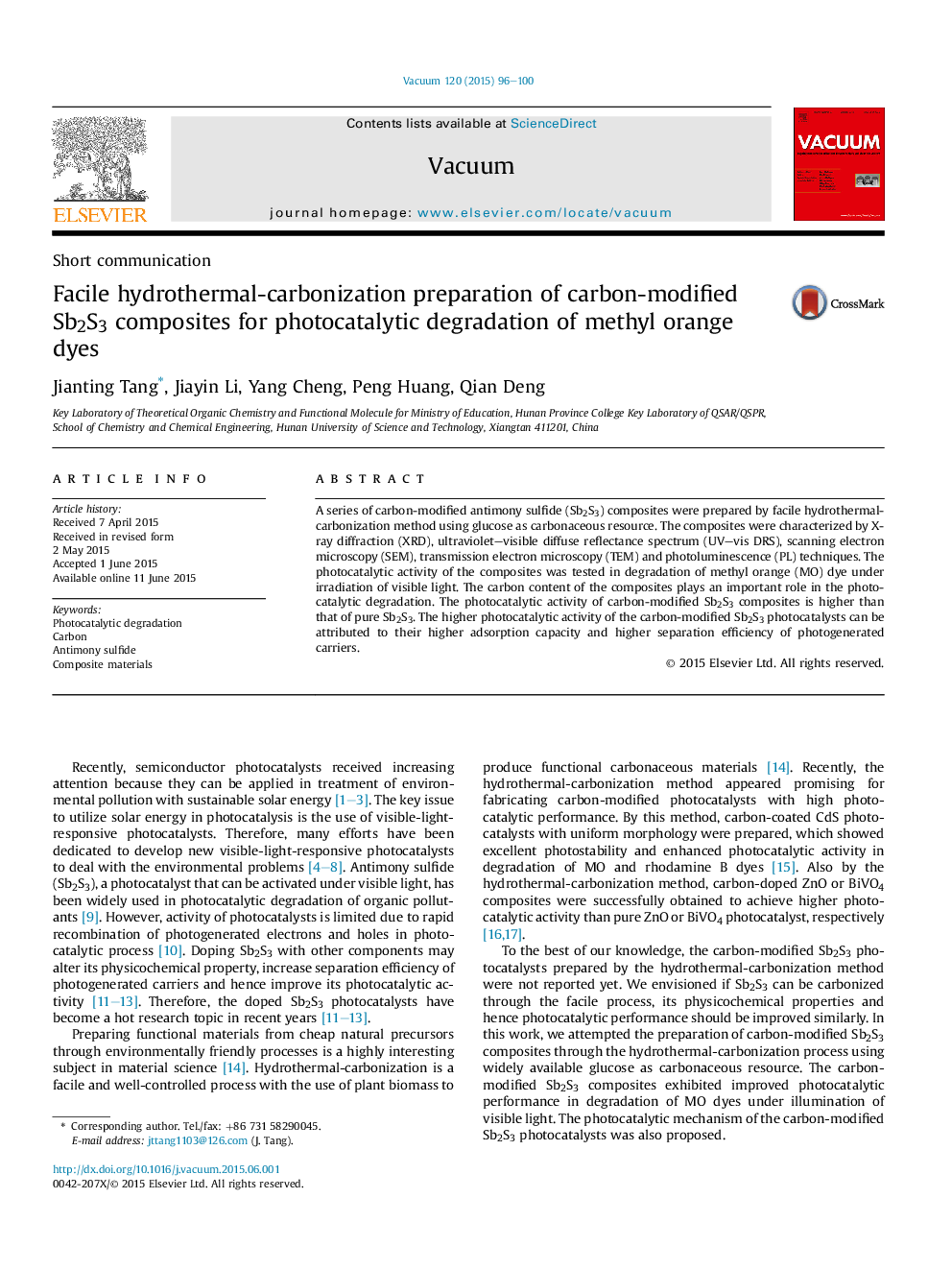| Article ID | Journal | Published Year | Pages | File Type |
|---|---|---|---|---|
| 1689503 | Vacuum | 2015 | 5 Pages |
•Carbon-doped Sb2S3 composites were prepared by hydrothermal-carbonization method.•The composites showed higher photocatalytic activity than pure Sb2S3.•This study adds insights into perspective of hydrothermal-carbonization method.
A series of carbon-modified antimony sulfide (Sb2S3) composites were prepared by facile hydrothermal-carbonization method using glucose as carbonaceous resource. The composites were characterized by X-ray diffraction (XRD), ultraviolet–visible diffuse reflectance spectrum (UV–vis DRS), scanning electron microscopy (SEM), transmission electron microscopy (TEM) and photoluminescence (PL) techniques. The photocatalytic activity of the composites was tested in degradation of methyl orange (MO) dye under irradiation of visible light. The carbon content of the composites plays an important role in the photocatalytic degradation. The photocatalytic activity of carbon-modified Sb2S3 composites is higher than that of pure Sb2S3. The higher photocatalytic activity of the carbon-modified Sb2S3 photocatalysts can be attributed to their higher adsorption capacity and higher separation efficiency of photogenerated carriers.
